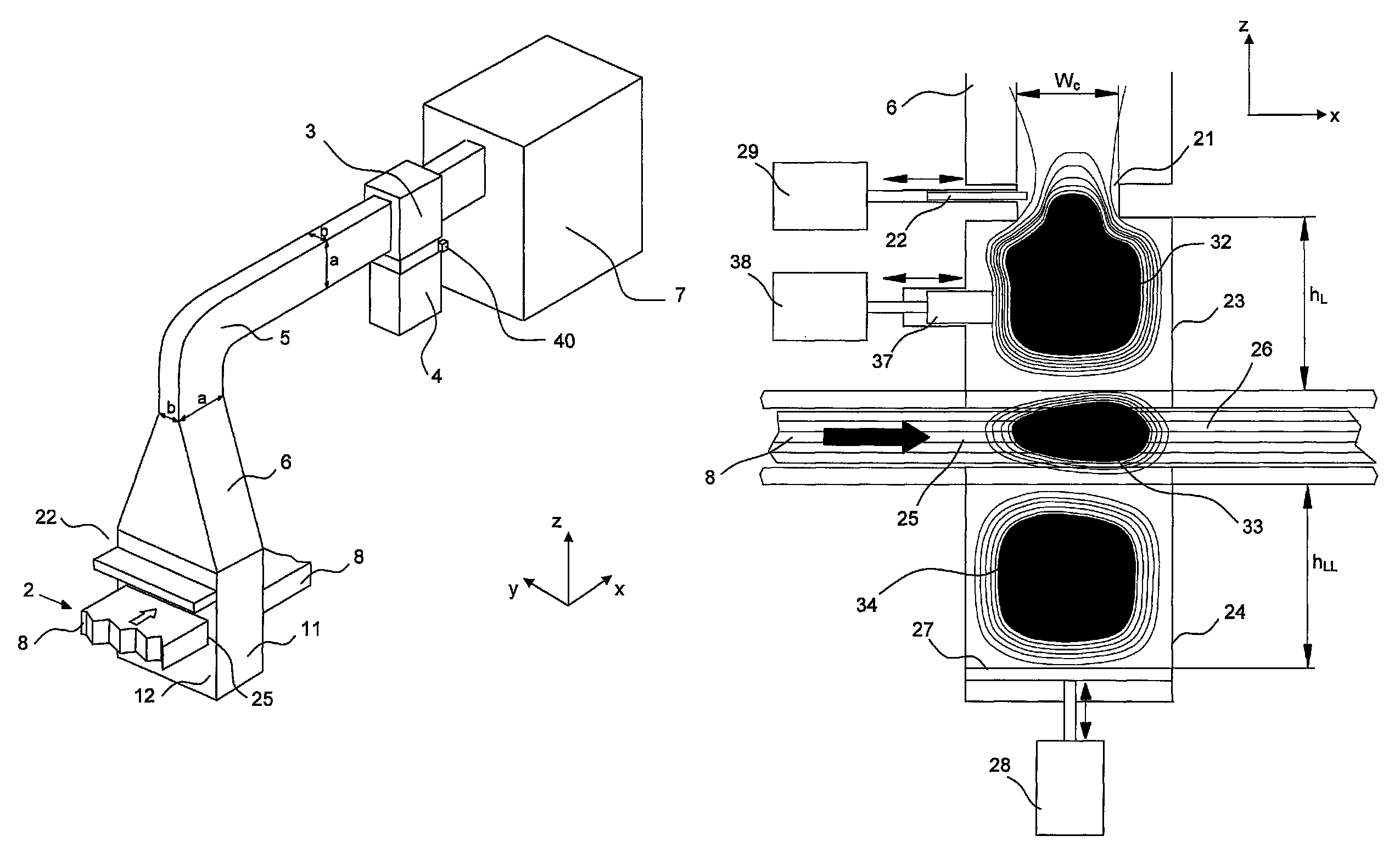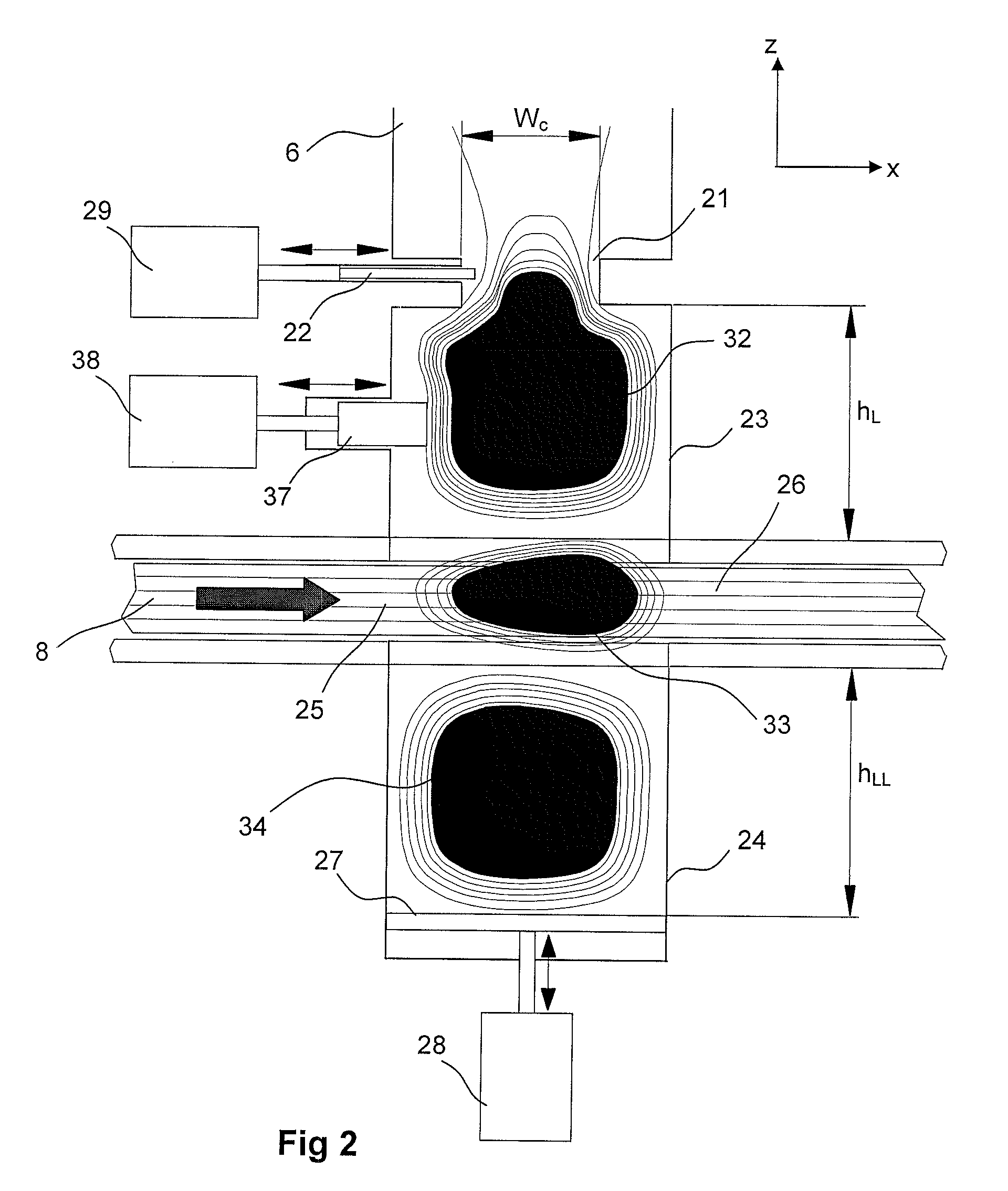Apparatus for microwave heating of planar products
a technology for microwave heating and planar products, applied in microwave heating, electrical apparatus, electric/magnetic/electromagnetic heating, etc., can solve the problems of increasing processing time, increasing waveguide metal loss, and relatively slow process, and achieve uniform heating pattern
- Summary
- Abstract
- Description
- Claims
- Application Information
AI Technical Summary
Benefits of technology
Problems solved by technology
Method used
Image
Examples
example 1
[0050]A two-and-half-wavelength applicator with 200 mm opening and the maximum electric field in the middle of the LVL (Laminated Veneer Lumber) panel was simulated with the upper part height hL=273 mm. The simulation results after a course tuning are presented in Table 1. These hLL and wc values may be used as default values. The results can be then enhanced by means of fine-tuning, as described above. FIG. 5 shows the average envelope electric field in x-z plane with 90 mm thick LVL.
[0051]
TABLE 1LowerCouplingReturnLVL'SpartwindowResonantlossthickness,height,width,frequency,at frt [mm]hLL [mm]wc [mm]fr [MHz][dB]90337158915−17.6120292156915−29.6150270156915−24.4185233156915−20.4
The example 1 shows that the heating apparatus according to the embodiment of the invention makes it possible to process the planar products in wide range of thickness up to any value between 50 mm to 200 mm or more. A preferred range of thickness is from about 90 mm to about 185 mm. The maximum thickness dep...
PUM
 Login to View More
Login to View More Abstract
Description
Claims
Application Information
 Login to View More
Login to View More - R&D
- Intellectual Property
- Life Sciences
- Materials
- Tech Scout
- Unparalleled Data Quality
- Higher Quality Content
- 60% Fewer Hallucinations
Browse by: Latest US Patents, China's latest patents, Technical Efficacy Thesaurus, Application Domain, Technology Topic, Popular Technical Reports.
© 2025 PatSnap. All rights reserved.Legal|Privacy policy|Modern Slavery Act Transparency Statement|Sitemap|About US| Contact US: help@patsnap.com



